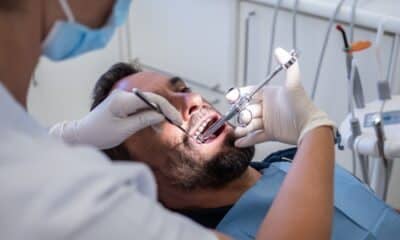How ABA Therapy Can Be Helpful In ASD And ADHD
ABA therapy is beneficial for children with autism spectrum disorder (ASD) and can also aid those with attention deficit hyperactivity disorder (ADHD). Many individuals with autism have experienced positive outcomes from ABA therapy, establishing its credibility.
Medical professionals often advise combining behavioral therapy with prescribed medications for individuals with ADHD to effectively manage symptoms, irrespective of their severity.
Behavioral therapy has shown significant success in addressing issues associated with ADHD, making it a preferred method for skill development in individuals with the disorder.
Let’s explore the advantages of this therapy for children with ADHD.
Children With ASD
Autism spectrum disorder (ASD) is a developmental condition linked to brain variances. People with ASD may encounter challenges in social interaction, communication, and may exhibit repetitive behaviors or narrow interests.
Moreover, they might have distinctive learning, movement, or attention patterns. It’s important to note that some individuals without ASD may also display similar symptoms.
For those with ASD, these characteristics can present significant obstacles in daily life.
Children With ADHD
ADHD is commonly diagnosed in children at a young age and is associated with difficulties in impulse control, resulting in impulsivity and challenges in maintaining attention.
The primary symptoms include:
- Difficulty in maintaining focus
- Frequent impulsive actions
- Excessive talkativeness
- High levels of hyperactivity
- Socialization problems
ADHD is categorized into three main subtypes: hyperactivity, combined type, and inattention.
Hyperactivity or impulsivity can lead to uncontrollable movements, fidgeting, or restlessness, resulting in behaviors like interrupting or speaking out of turn.
The combined type indicates the presence of both hyperactivity and inattention. Inattention and disorganization involve challenges in time management and task completion in an organized manner.
How ABA Therapy Works On Children With ASD & ADHD
According to the CDC, behavioral therapy is effective in reducing unwanted behaviors in individuals with ADHD, similar to its impact on those with autism.
Research suggests that a combination of medication with ABA therapy is beneficial for most children with ADHD, while demonstrating significant benefits for children with ASD.
However, certain children may be too young for treatment, and parents are advised to consult a doctor for age-appropriate recommendations.
Meanwhile, parents can utilize ABA therapy techniques to address symptoms of ADHD.
ABA Therapy Techniques On Children With ASD & ADHD
The goal of ABA therapy is to induce positive changes in a patient’s behavior through a three-step process, starting with the antecedent.
The antecedent acts as a cue or instruction, making the individual aware of the consequences of their actions. The focus during this phase is on how behaviors are expressed and the resulting outcomes.
Parents and therapists can employ specific methods to promote desired behaviors in children.
Here are some commonly used techniques:
Response training
This technique involves play-based therapy that targets key aspects of cognitive abilities, social skills, and learning capabilities in children.
In response training, interventions are neutral, meaning that actions taken by therapists and parents directly relate to the child’s behavior.
If a child appropriately requests something, the response is tailored based on the context of the interaction. Positive behavior is rewarded only with items relevant to their treatment.
Trial training
This method breaks down complex tasks into precise segments. Patients receive rewards when they exhibit desired behaviors.
Implementing a reward system like this significantly enhances the benefits for both children with autism spectrum disorder and ADHD.
Self-management training
Self-management training is often conducted with older ASD and ADHD patients. It involves creating a personalized plan to allow patients to self-regulate their behavior and follow their treatment independently.
Through self-regulation, therapists provide guidance on how patients can reward themselves for displaying specific behaviors, ensuring successful skill development.
Differential reinforcement
Differential reinforcement reinforces positive behaviors in children by rewarding actions seen as favorable.
During this approach, parents and therapists purposely delay positive reinforcement to encourage sustained positive behavior.
What Are Common & Best Therapies For Children With ASD Or ADHD?
While various therapies exist for treating ASD and ADHD, the approach may vary, especially between children and adults.
Treatment customized for adults differs significantly from that tailored for children. Children’s treatment often involves parents, guardians, and teachers.
Cognitive-behavioral therapy is a commonly utilized technique.
Cognitive-behavioral therapy has been remarkably successful and is considered one of the best ABA therapies for children, leading some individuals to discontinue their reliance on previously prescribed medications.
Wrapping up
The approach varies for adults and children, usually incorporating parents and teachers in children’s treatment. Cognitive-behavioral therapy is a prevalent technique that focuses on positive behaviors through methods like self-management and differential reinforcement.
Given this, it’s evident that children diagnosed with autism or ADHD can experience significant benefits through ABA therapies.
















